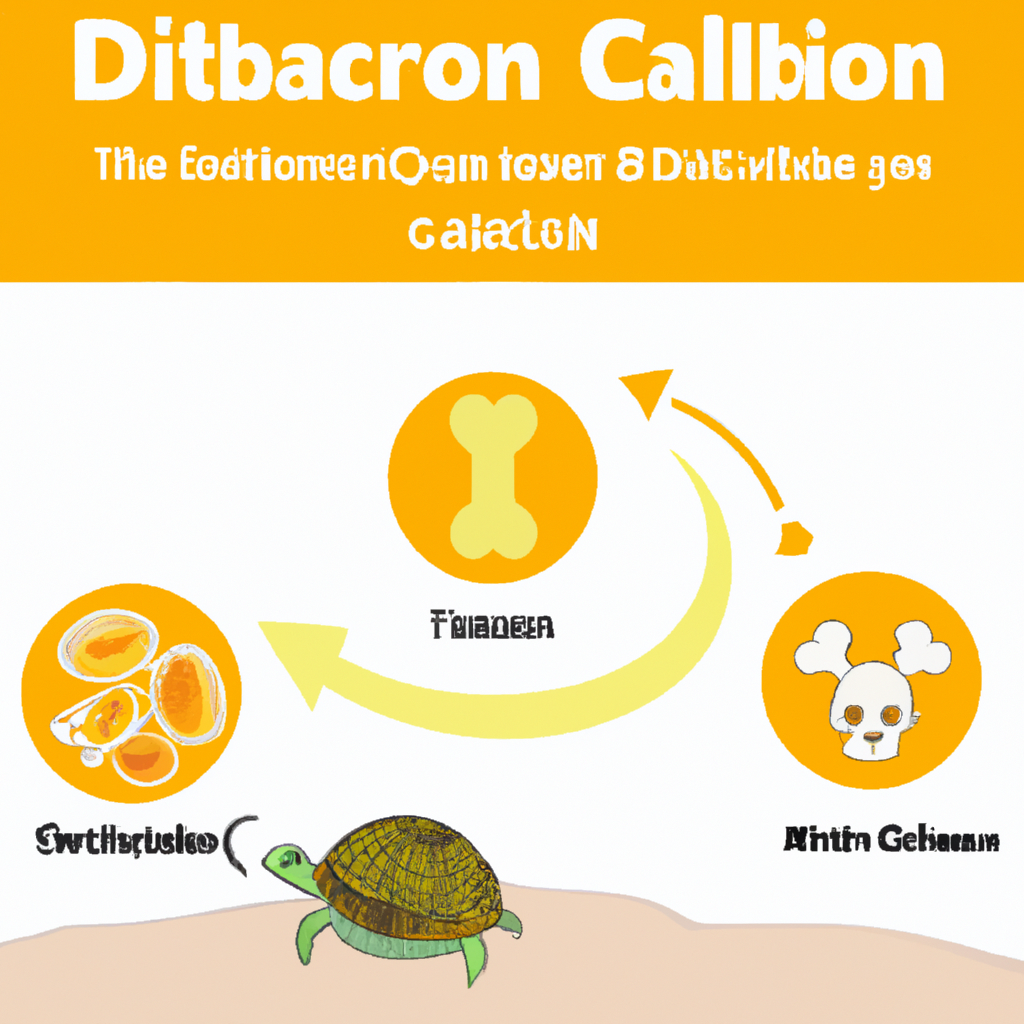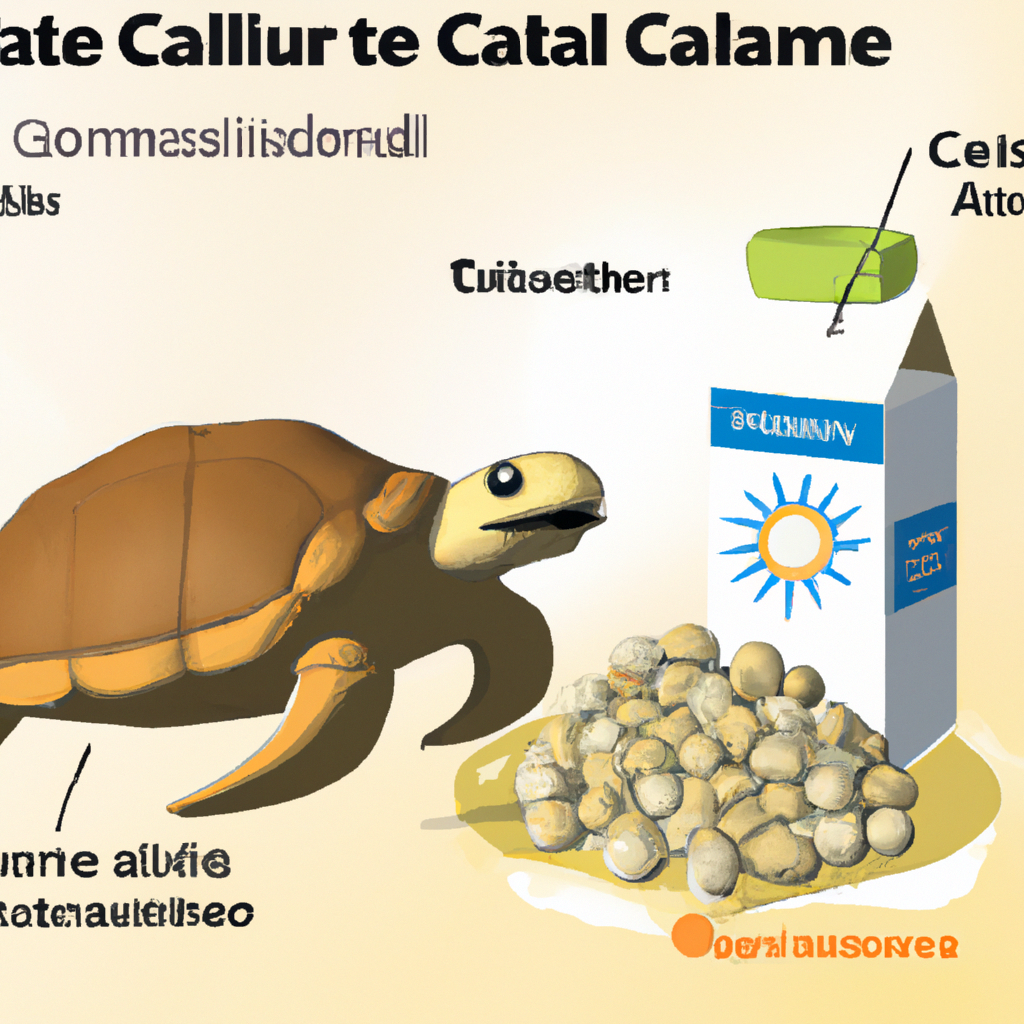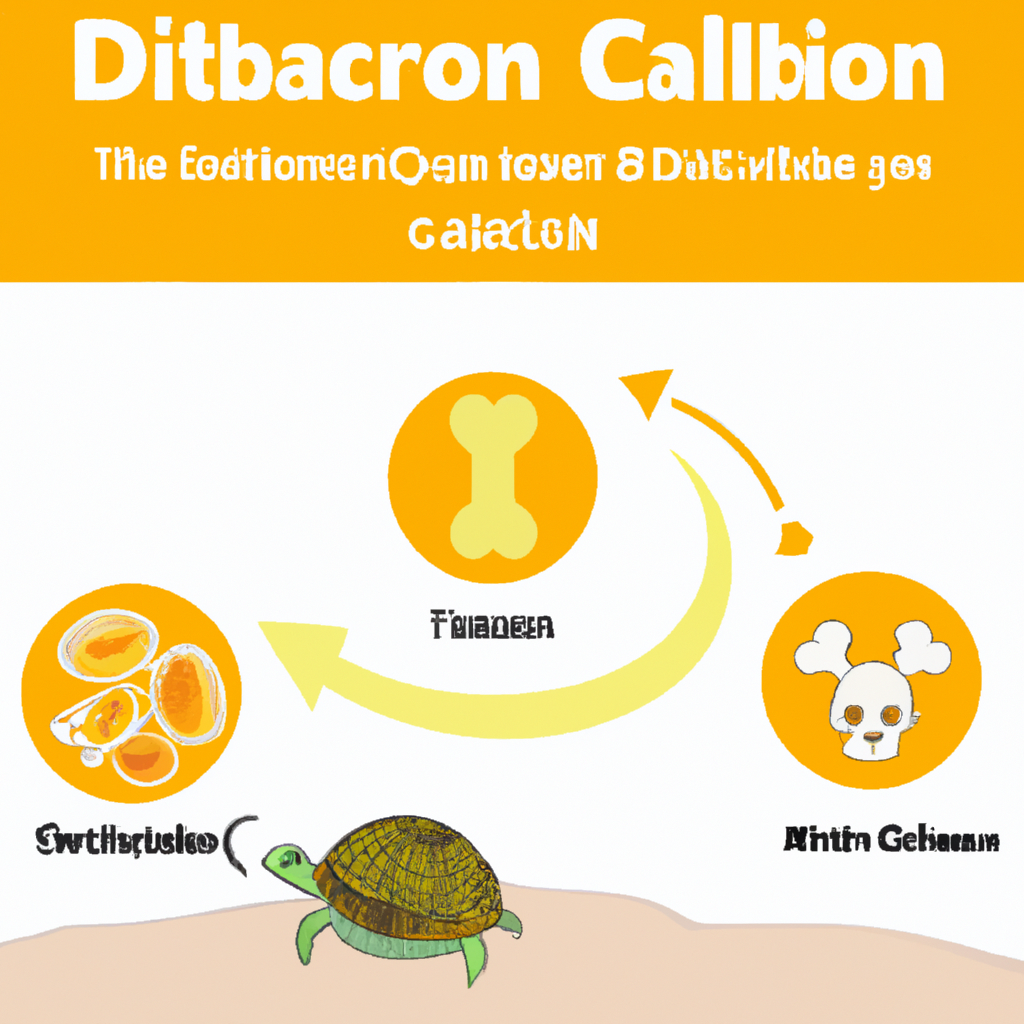Have you ever wondered what it takes to maintain a healthy turtle shell? Well, it all comes down to two crucial components – calcium and vitamin D3. In this article, we will explore the significance of these nutrients for turtle shell health and why they play a vital role in ensuring the well-being of these fascinating creatures. So, let’s dive into the world of calcium and vitamin D3 and unravel their importance in maintaining healthy turtle shells.
The Role of Calcium in Turtle Shells
Turtle shells, with their hard and protective exterior, play a crucial role in the survival and well-being of these fascinating creatures. Calcium, an essential mineral, forms the building block of their shells and is vital for their overall health. Understanding the structure and composition of turtle shells can help us appreciate the significance of calcium in maintaining their strength and integrity.
Structure and Composition of Turtle Shells
Turtle shells consist of two distinct parts: the upper dome-shaped carapace and the lower, almost flat plastron. These shells are composed of a combination of bones, cartilage, and keratin, a fibrous protein. The bones provide the structural support, while the cartilage ensures flexibility, and the keratin acts as a protective layer.
Underneath this complex structure lies the key component that gives the shell its strength – calcium. Calcium carbonate, a mineral compound, makes up a significant portion of the turtle shell. This mineral is known for its hardness and ability to resist external forces, protecting the turtle from predators and environmental hazards.
Calcium as the Building Block of Shells
Calcium is not only an essential mineral for the shell’s structure but also plays a vital role in the growth and development of the turtle itself. When turtles are hatchlings, they possess a soft shell that gradually hardens over time. This hardening process depends on an adequate intake of calcium, which is incorporated into the developing shell.
Calcium acts as a scaffolding material during the formation of the shell, providing the necessary framework for other components to organize around. Without sufficient calcium, the shell may not fully develop, leaving the turtle vulnerable to injuries and deformities.
Calcium Deficiency and Shell Health
Unfortunately, calcium deficiency is an all-too-common problem among captive turtles. When turtles do not receive an adequate amount of calcium in their diet, their bodies start to draw calcium from their bones and shells to maintain vital functions. This depletion weakens the shell, making it prone to damage and deformities.
Common Shell Problems Caused by Calcium Deficiency
One of the telltale signs of calcium deficiency in turtles is shell softening, a condition known as “metabolic bone disease.” Softening of the shell can result in a pliable, rubbery texture, which can lead to fractures and infections. Additionally, calcium deficiency can lead to shell deformities such as pyramiding, where the scutes (individual plates on the shell) become raised and form pyramid-like structures. Malformation and irregular growth rings are also common, making the shell appear distorted and abnormal.
The Role of Vitamin D3 in Turtle Shells
While calcium is crucial for shell formation, its absorption and utilization are heavily dependent on the presence of vitamin D3. Vitamin D3 acts as a facilitator, ensuring that calcium is properly absorbed and metabolized by the turtle’s body. Without adequate vitamin D3, even a calcium-rich diet may prove ineffective in maintaining a healthy shell.
Vitamin D3 and Calcium Absorption
When turtles bask in the sunlight, a process is triggered that converts a precursor molecule present in the skin to vitamin D3. This conversion is influenced by ultraviolet B (UVB) radiation, making exposure to natural sunlight or artificial UVB lighting crucial for the turtle’s vitamin D3 synthesis. Vitamin D3 then aids in the absorption of dietary calcium from the gut, allowing it to be utilized for shell development.
The Importance of UVB Light
UVB light plays a critical role in the synthesis of vitamin D3 and, thus, the overall health of a turtle’s shell. Natural sunlight contains the full spectrum of UVB radiation, which stimulates vitamin D3 synthesis and enhances calcium absorption. However, in captive environments, relying solely on natural sunlight may not always be feasible. That’s where artificial UVB lighting comes into play, providing a suitable alternative to ensure turtles receive the UVB rays they need.
Vitamin D3 Deficiency and Shell Health
Turtles kept in environments with inadequate UVB lighting or those deprived of proper access to natural sunlight can suffer from a vitamin D3 deficiency. Without sufficient vitamin D3, turtles are unable to absorb calcium efficiently, leading to weakened shells and a host of health complications.
Common Shell Problems Caused by Vitamin D3 Deficiency
Vitamin D3 deficiency can result in softening of the shell, similar to calcium deficiency. In addition to shell softness, turtles may experience stunted growth, skeletal deformities, and weakened immune systems. These issues can have long-term consequences, often manifesting as irreversible shell malformations and a reduced lifespan.

Maintaining Proper Calcium and Vitamin D3 Levels
Given the crucial role of calcium and vitamin D3 in a turtle’s shell health, it is essential to provide them with the necessary nutrients through both their diet and their environment.
Providing a Calcium-Rich Diet
To ensure a turtle’s calcium needs are met, it is important to offer a well-balanced diet that includes calcium-rich foods. Nutritious options include dark, leafy greens (such as kale and collard greens), calcium-fortified pellets, and calcium-rich animal-based foods like snails or shrimp. Consult with a reptile veterinarian or herpetologist to determine the appropriate calcium-to-phosphorus ratio for your specific turtle species.
Calcium Supplements for Turtles
In some cases, diet alone may not provide sufficient calcium. In such instances, calcium supplements specifically designed for turtles can be used. These supplements can be in the form of powdered calcium, calcium blocks, or liquid solutions. It is important to follow the manufacturer’s instructions and consult a reptile veterinarian for guidance on supplementation.
Natural Sources of Vitamin D3
While UVB light is the primary source of vitamin D3 for turtles, it is essential to complement lighting with a vitamin D3-rich diet. Foods such as liver, oily fish (e.g., salmon), and egg yolks are natural sources of vitamin D3 and can help supplement a turtle’s dietary requirement.
UVB Lighting for Vitamin D3 Synthesis
To ensure proper vitamin D3 synthesis, turtles must have access to UVB light. This can be achieved through the use of artificial UVB bulbs specifically designed for reptiles. The bulbs should emit the appropriate UVB spectrum and be placed in a suitable fixture to provide adequate lighting throughout the turtle’s habitat. Regular replacement of bulbs, as per the manufacturer’s instructions, is crucial to maintain an effective UVB output.
Recognizing Calcium and Vitamin D3 Deficiency in Turtles
As responsible turtle owners, it is vital to be aware of the signs and symptoms of calcium and vitamin D3 deficiencies in order to promptly address any issues that may arise.
Softening of the Shell
One of the most evident signs of calcium or vitamin D3 deficiency is shell softening. A healthy turtle shell should be firm and rigid. If you notice any mushy, flexible areas on the shell, this may indicate a problem with calcium absorption or utilization.
Pyramiding
Pyramiding refers to the abnormal growth of the shell, characterized by raised scutes that resemble pyramid-like structures. This condition is often a result of improper calcium levels or imbalances in the diet. Regular monitoring of the shell’s growth and appearance can help identify pyramiding early on.
Malformation and Deformities
Calcium and vitamin D3 deficiencies can contribute to shell malformation and deformities. Turtles may exhibit irregular growth rings, bumps, or lumps on the shell, or an overall distorted appearance. These abnormalities are a clear indication of underlying issues with calcium and vitamin D3 metabolism.
Irregular Growth Rings
The growth rings on a turtle’s shell should be smooth and evenly spaced. Irregular or stunted growth rings may suggest deficiencies in essential nutrients, including calcium and vitamin D3. Close observation of the shell’s growth pattern can aid in identifying potential deficiencies.

Preventing Calcium and Vitamin D3 Deficiency
Prevention is key when it comes to maintaining optimal calcium and vitamin D3 levels in turtles. By following a few simple guidelines, you can significantly reduce the risk of deficiencies and ensure your turtle’s shell remains healthy and strong.
Balanced Diet for Turtles
Providing a balanced and varied diet is crucial for meeting a turtle’s nutritional needs. Incorporate calcium-rich foods into their diet, such as calcium-fortified pellets, leafy greens, and appropriate animal-based protein. Avoid excessive reliance on low-calcium foods, like fruits and vegetables, as they may dilute the overall calcium intake.
Avoiding Overfeeding or Underfeeding
Feeding your turtle the appropriate portion size is essential to prevent nutritional imbalances. Overfeeding can lead to obesity, while underfeeding may result in deficiencies. Consult a reptile veterinarian to determine the correct feeding schedule and portion sizes based on your turtle’s specific needs.
Proper Exposure to UVB Light
Ensure your turtle’s enclosure is equipped with suitable UVB lighting to provide the necessary exposure to UVB rays. Place the artificial UVB light in a fixture that allows for proper dispersion of the light throughout the habitat. Regularly monitor the UVB output using a UVB meter, as the effectiveness of the bulbs may decrease over time.
Regular Health Check-ups
Schedule regular visits to a reptile veterinarian who can assess your turtle’s overall health and perform necessary tests, including bloodwork, to monitor calcium and vitamin D3 levels. Regular check-ups allow for early detection of any deficiencies or health issues and help ensure prompt intervention.
Treatment and Remedies for Calcium and Vitamin D3 Deficiency
In cases where turtles are diagnosed with calcium or vitamin D3 deficiency, appropriate treatment and remedies can help improve their shell health and overall well-being.
Calcium and Vitamin D3 Supplements
Supplementation with calcium and vitamin D3 may be necessary to address deficiencies. Your reptile veterinarian will guide you in choosing the right supplements, dosage, and administration method. Consistency and adherence to the prescribed supplementation regimen are crucial for successful treatment.
Correction of Imbalanced Diet
Working closely with a reptile veterinarian, adjust your turtle’s diet to ensure a proper balance of essential nutrients. This may involve increasing calcium-rich food items and reducing low-calcium options. A dietitian or a reptile nutrition expert can also provide valuable guidance in formulating a well-rounded diet.
UVB Lighting Upgrades
If deficiencies are attributed to improper or inadequate UVB lighting, consider upgrading the lighting system in your turtle’s enclosure. Ensure that the UVB bulbs are of high quality, emit the necessary spectrum, and are replaced regularly to maintain their effectiveness.
Veterinary Care for Severe Cases
In severe cases of shell deformities or metabolic bone disease, it is crucial to seek veterinary care promptly. A reptile veterinarian experienced in treating shell-related issues can provide specialized care, including medications, nutritional support, and rehabilitative therapies.
Other Factors Affecting Turtle Shell Health
While calcium and vitamin D3 play essential roles in shell health, other factors should not be overlooked when striving to provide the best possible care for your turtle.
Temperature and Humidity
Maintaining the appropriate temperature and humidity levels in your turtle’s enclosure is crucial for their overall health. Turtles thrive in specific temperature ranges that vary depending on the species. Similarly, maintaining appropriate humidity levels helps prevent dehydration and promotes healthy skin and shell. Research your turtle’s specific temperature and humidity requirements to ensure a suitable environment.
Water Quality and Cleanliness
Turtles spend a significant amount of time in the water, so ensuring clean and appropriately filtered water is essential. Poor water quality can lead to shell infections and health issues. Regular water changes and appropriate filtration systems are necessary to maintain a healthy aquatic habitat.
Stress Reduction and Enrichment
Stress can have a negative impact on a turtle’s health, including their shell. Provide your turtle with a stress-free environment that includes appropriate hiding spots, basking areas, and suitable enrichment activities. Enrichment can include providing toys, varied substrates, and opportunities for natural behaviors, such as climbing or burrowing.
Genetics and Species-Specific Needs
It is important to remember that each turtle species has its own unique requirements and genetic predispositions. Understanding your turtle’s species-specific needs is vital for providing tailored care and addressing any potential health issues. Research their natural habitat, behavior, and specific nutritional requirements to ensure their well-being.
Potential Risks and Hazards
While calcium and vitamin D3 are essential for shell health, it is equally important to be aware of potential risks and hazards associated with their supplementation or inadequate intake.
Calcium Overdose or Toxicity
Excessive calcium supplementation can lead to calcium overdose or toxicity, resulting in health complications such as kidney issues and a hardening of soft tissues. Always consult a reptile veterinarian for appropriate dosage and avoid over-supplementation.
Improper UVB Lighting
Improper UVB lighting can be detrimental to turtles. The use of low-quality bulbs, incorrect positioning, or failure to replace bulbs regularly can result in inadequate UVB exposure. This can lead to vitamin D3 deficiency and subsequently impact calcium absorption.
Inadequate Dietary Variety
Providing a varied diet is essential for meeting a turtle’s nutritional needs. Relying heavily on one or two food items can lead to imbalances and deficiencies. Ensure a diverse range of calcium-rich foods and seek guidance from a reptile nutrition expert to formulate a suitable diet.
Incorrect Vitamin D3 Supplementation
While vitamin D3 supplements are necessary in some cases, incorrect administration or dosage can lead to adverse effects. Always follow the guidance of a reptile veterinarian and use supplements specifically formulated for turtles.
Conclusion
Taking care of your turtle’s shell health is a crucial responsibility for any turtle owner. By understanding the vital roles calcium and vitamin D3 play in shell development and maintaining optimal levels of these nutrients, you can ensure your turtle’s shell remains strong, healthy, and free from deformities. Remember to provide a well-balanced diet, appropriate UVB lighting, and seek regular veterinary care to address any deficiencies or shell-related issues. By taking these steps, you can help your turtle thrive and enjoy a long, healthy life. So, go ahead and be a responsible turtle owner – consult a reptile veterinarian today and provide the best care possible for your shelled companion.
